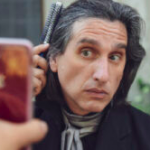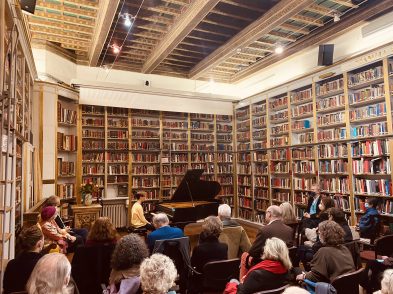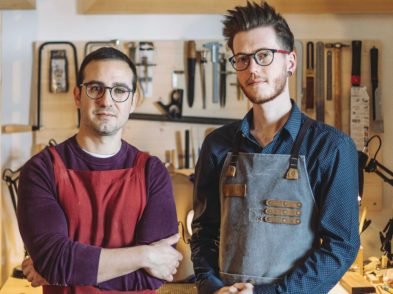The Maggio Musicale Fiorentino is legendary. It takes its name from the age-old Florentine May holidays, when nobility and civilians alike would decorate all of Florence with spring blooms to the floating sounds of musicians playing as they danced down the lungarni and the winding streets of an ancient city, always alive.
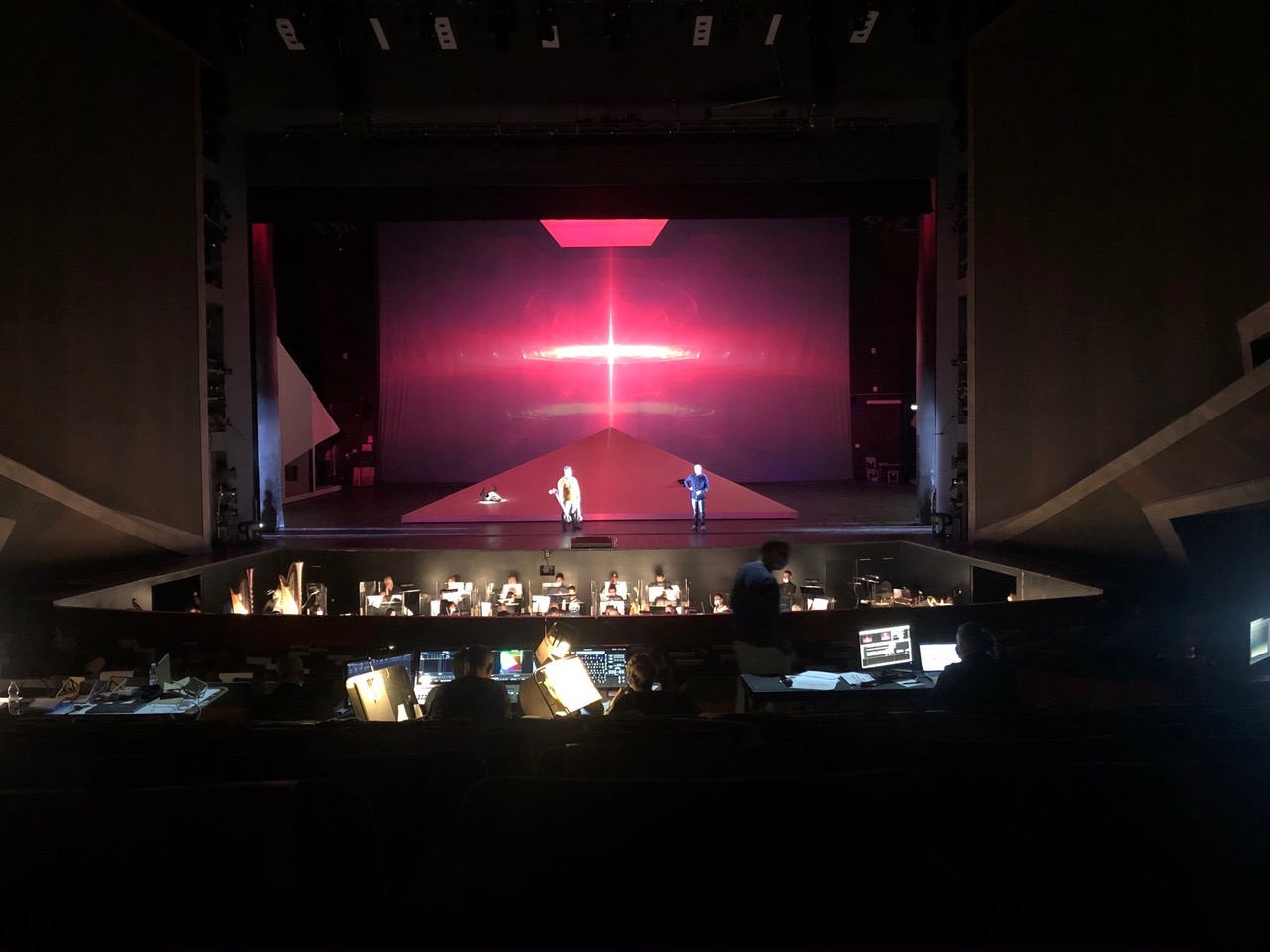
Over the years, the “May Holidays” grew to take in many of the performing arts, from solo music to ensemble events, sung music and dance, poetry, theatricals and performance art. The integral part of what is now a year-long, world-class, ongoing celebration of the performing arts is that the artists bringing these varied celebrations into thrilling existence are not long in the past, as so many of Florence’s great artists are, but very much alive, their artistry blossoming forth whether winter, spring, summer or fall, engaging with the Florentine public and everyone else who is encouraged to take part.
Having made Florence my permanent residence at the top of 2020’s dark days, the thrill of Maggio’s engaging live arts would be relegated to legend for a singularly frightful entire year. But now, as we emerge from our life-protecting enclaves, if the blossoming of green is oxygen to the world, then engaging with living art is oxygen to the soul, and finally on a blue-skied, warm, late spring morning, I am able to visit the hallowed halls of the Teatro del Maggio Musicale Fiorentino.
The Maggio’s musical park and buildings are not what one might expect if arriving directly from a walk through the centuries-old town. The seemingly modern, grey-white, post-modern lines are placed specifically within the context of a sprawling terrace, a surrounding park, outdoor eateries, the grand outdoor amphitheatre and the still-to-be completed additional concert halls. And yet, upon reflection, viscerally I understand architect Paolo Desideri’s post-2000 conception, which brings to mind the piazza Santa Croce with the basilica as its mecca, where here, the theatre is a mecca for souls searching for nourishment from live art.
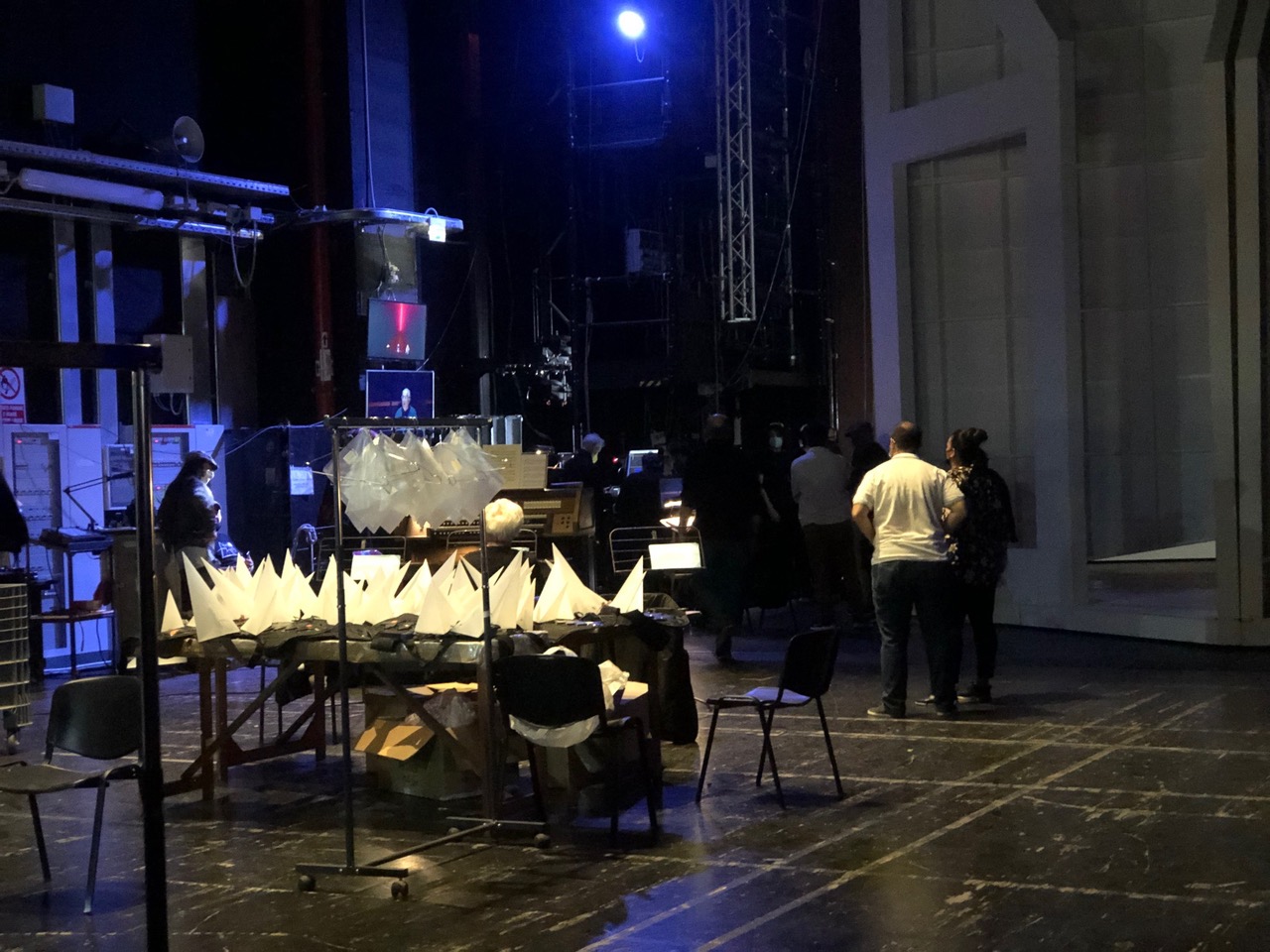
First, I am taken through a back entrance where a massive clay prehistoric-looking prop rhinoceros is awaiting his stage entrance. Beneath him are a number of denim- and t-shirt-clad young men and women. I recognize several musicians from the Maggio orchestra, with whom I have played piano for a film or two that I have been a part of. We always have a wonderful time together and seeing musicians on break from rehearsal, I am struck at the youthfulness of the members. Great music and great art is not just for an older generation. It is something that strikes me further on entering the Maggio rehearsal hall, a spectacular and comfortable wood-lined construction that reverberates gloriously with the clarion sounds of a tenor singing Puccini, then a baritone and bass singing Verdi for their classmates accompanied by young colleagues in the “Accademia,” the theatrical opera studies program for artists under the age of 25.
Next up are the vast hallways adorned with historical photos of the Maggio orchestra dating back to its origins in 1933, one of the first grand festivals of its kind in all of Europe, right alongside original posters of costume designs for various operas throughout the years. As we make our way through the lower halls of the vast edifice, I see the names of artists who have conducted the orchestra: Wilhelm Furtwängler, Bruno Walter, Otto Klemperer, Herbert von Karajan, Leonard Bernstein, Claudio Abbado, Lorin Maazel, Carlo Maria Giulini, Carlos Kleiber, Georg Solti, Seiji Ozawa, Daniel Barenboim, and many others. I remember that the orchestra performed the famous Caracalla “Three Tenors” concert, which became the highest-selling classical album of all time, led by Maestro Zubin Mehta. I think of the composers who have worked with the orchestra over the years: Strauss, Mascagni, Hindemith, Stravinsky… And then, a sound piques my ears. It is a backstage sound that I have come to know so well from my own work as a performer: an orchestra warming up being fed through the internal sound system, filling the hallways and letting everyone know that sacred business is about to begin.
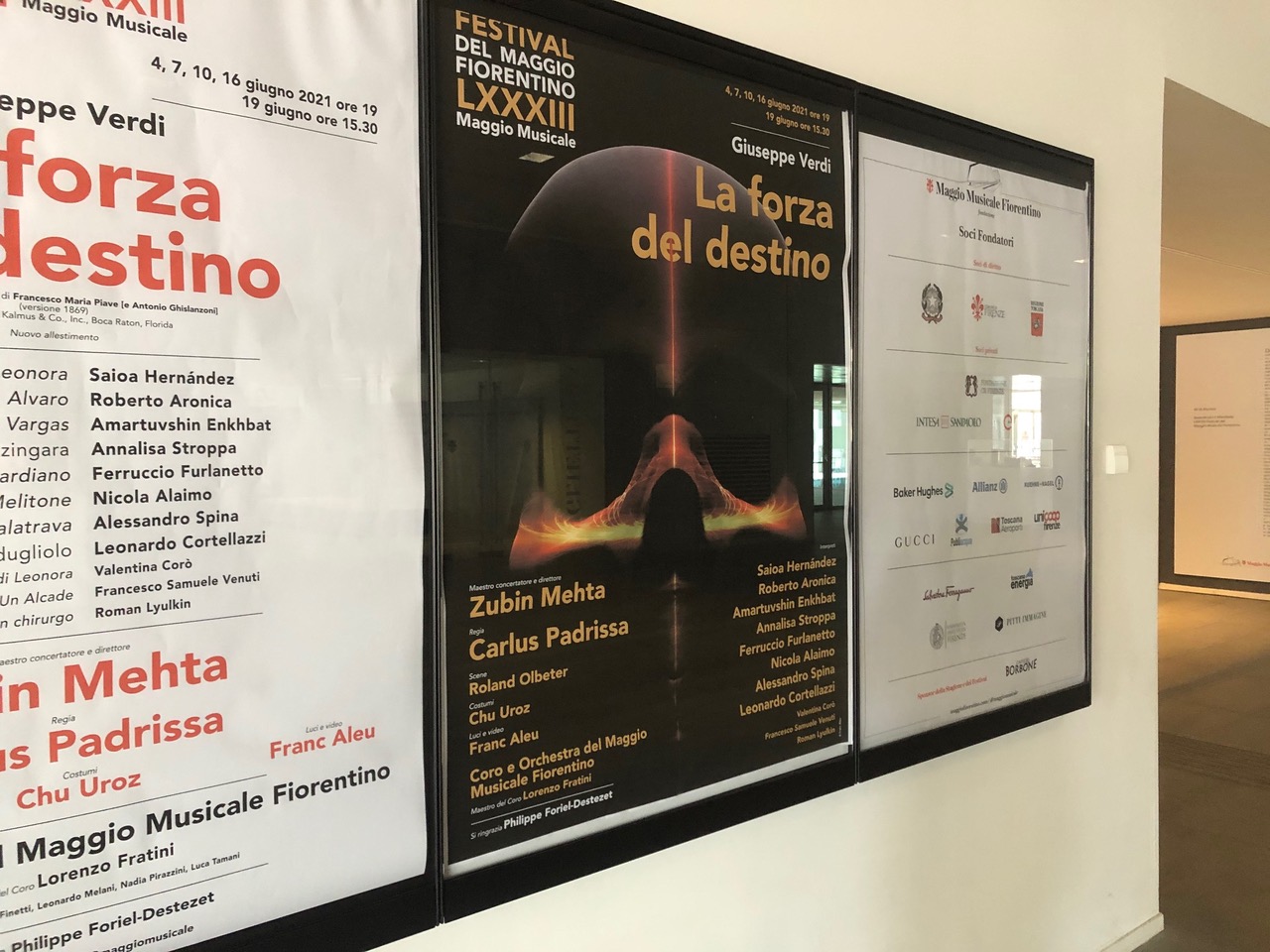
As I make my way to the stage entrance, the downbeat takes place. It is a scene finale of Verdi’s opera Forza del Destino and the impressive side-stage door is opened just enough for me to fit in, the side-stages large enough to house operas of their own, lit by the ever-present backstage “blue light,” with fly-rails gently lit from the floor, so fly-men can see what they must operate, while a sea of stagehands silently go about their business. The television monitor just at the tip of the stage wing features the face and baton of a gentle man. I recognize that face. It is that of the Artistic Director and Conductor of Maggio, the great Maestro Zubin Mehta.

Maggio Musicale Fiorentino has been the home of Maestro Mehta for more than 30 years. He consecrated the new comprehensive building in 2011 with Beethoven’s 9th Symphony after performances in various venues throughout the historic city. Over the years, the Maestro has overseen the development of the Maggio orchestra and Maggio programming, on a par with the great artists and festivals of the world, featuring artists recognizable not just in Italy but worldwide. As someone who grew up attending the Metropolitan Opera in New York at Lincoln Centre, this first time at Teatro del Maggio feels similar to my first experience there. Lincoln Centre was a wildly new compound in an old New York setting, while still paying homage to the humanity and grandeur of New York. The entire Maggio environment is grand, yet personal and intimate too, just as most Florentine experiences are.
Now I am taken into the auditorium, a gently flowing basin of sound, standing at the back, hearing Baritone Amartuvshin Enkhbat and Tenor Roberto Aronica singing their duet, their voices resonating as if they were standing right in front of me. The technical team sits midway on the parterre, testing video and lighting cues, while the maestro and orchestra rehearse. The repetiteur (rehearsal piano artist) follows along with his oversized score, mimicking the maestro’s nuances exactly. Suddenly, the orchestra stops and a flap opens at the bottom edge of the stage between the orchestra and singers. A head pops out, ostensibly that of the assistant conductor, who makes a pointed remark to the maestro that sends the orchestra, including the maestro, into a quick fit of laughter. I couldn’t hear the comment, but it felt like being at a commedia dell’arte rehearsal in the mid-17th century, such was the perfectly timed slapstick moment. Before I’d only seen such a thing staged, never natural, never in real time. Hysterically funny, it was sublimely Italianate in its theatrical tradition.
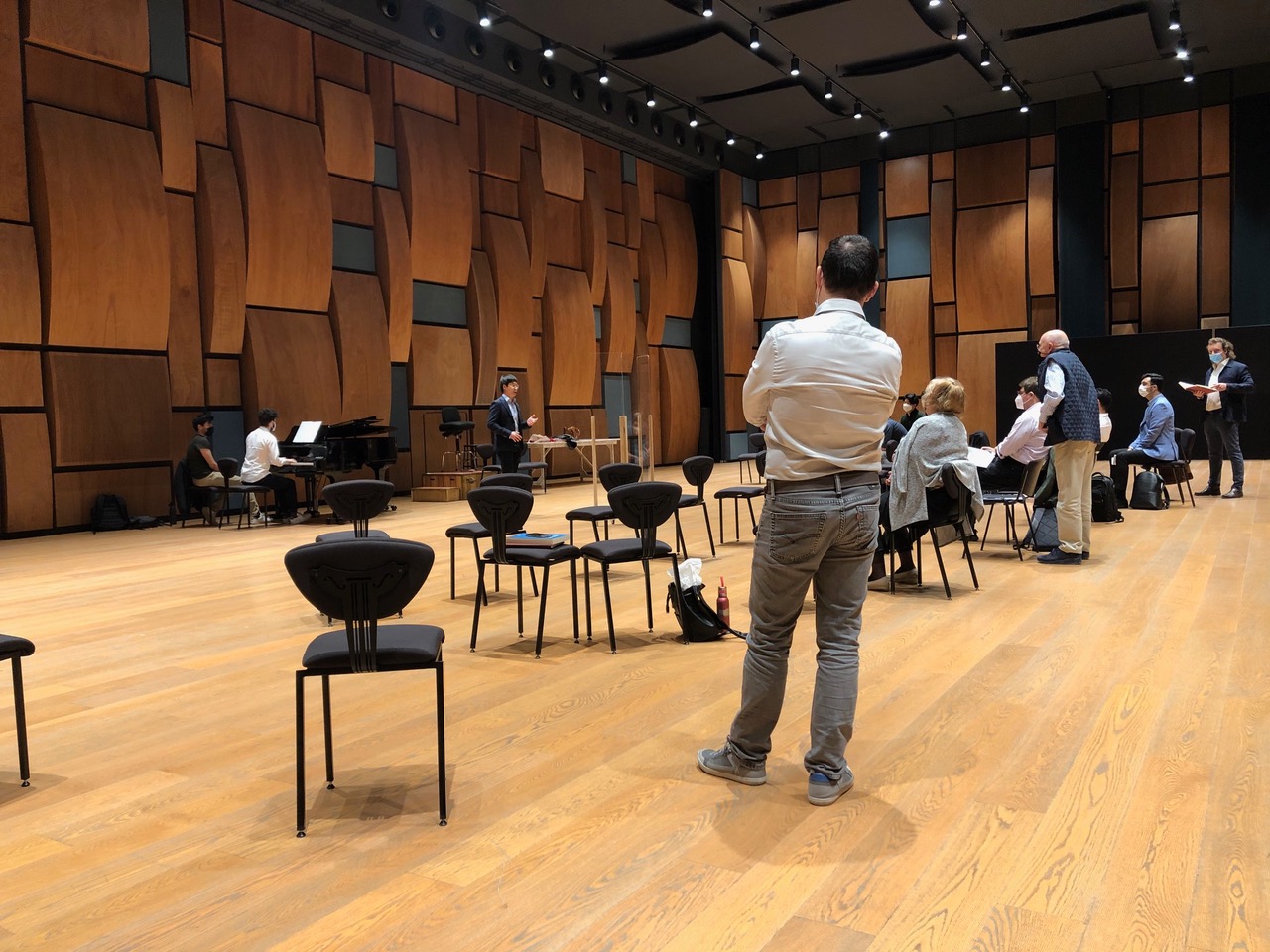
The finale of the scene is taken again before the house lights come on, signaling a 15-minute break for orchestra and technicians. The orchestra disperses and there is no one left in the pit, but Maestro Mehta, resembling a father who has allowed his children to play for a few minutes while he waits for them to return and get back to business. I make my way to the Maestro to say hello. Immediately, he is as warm and gracious as he was upon our first meeting not so long ago. It is still stunning to me that the man I first saw when I was just ten years old, conducting my pianistic hero, Horowitz, in Rachmaninoff’s 3rd Concerto with the New York Philharmonic, is the man sitting here before me on his orchestra conductor’s chair. Leaning over the edge of the pit, he addresses me by my first name and invites me to come to his June performances of Forza, as well as those featuring the popular compositions of Johannes Brahms, with international celebrities such as violinist Pinchas Zukerman and pianist Daniil Trifonov, plus a concert by the outstanding soprano Anna Netrebko. Alongside Maestro Mehta, these are names that might be considered the event of the season anywhere else in the world, and yet they are regular occurrences here in Florence, right beside the ever-present legacies of Michelangelo, Brunelleschi, Boccaccio, Leonardo da Vinci, Botticelli and Giotto. In this case, however, we are not just able to engage with the art that has been left with us to enjoy, but to engage with the artist as the art itself is being made.
Book tickets for performances at the Teatro del Maggio Musicale Fiorentino.

